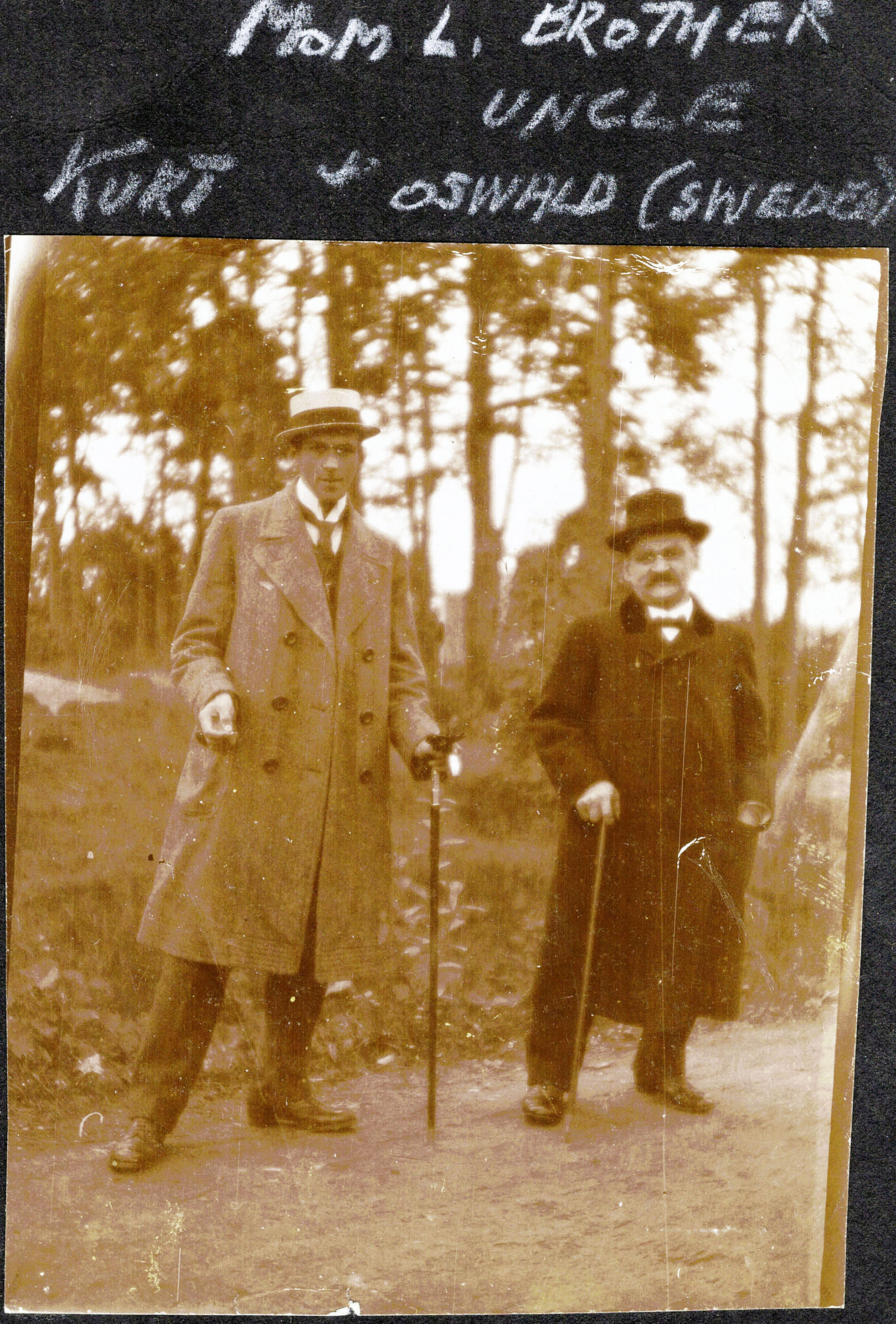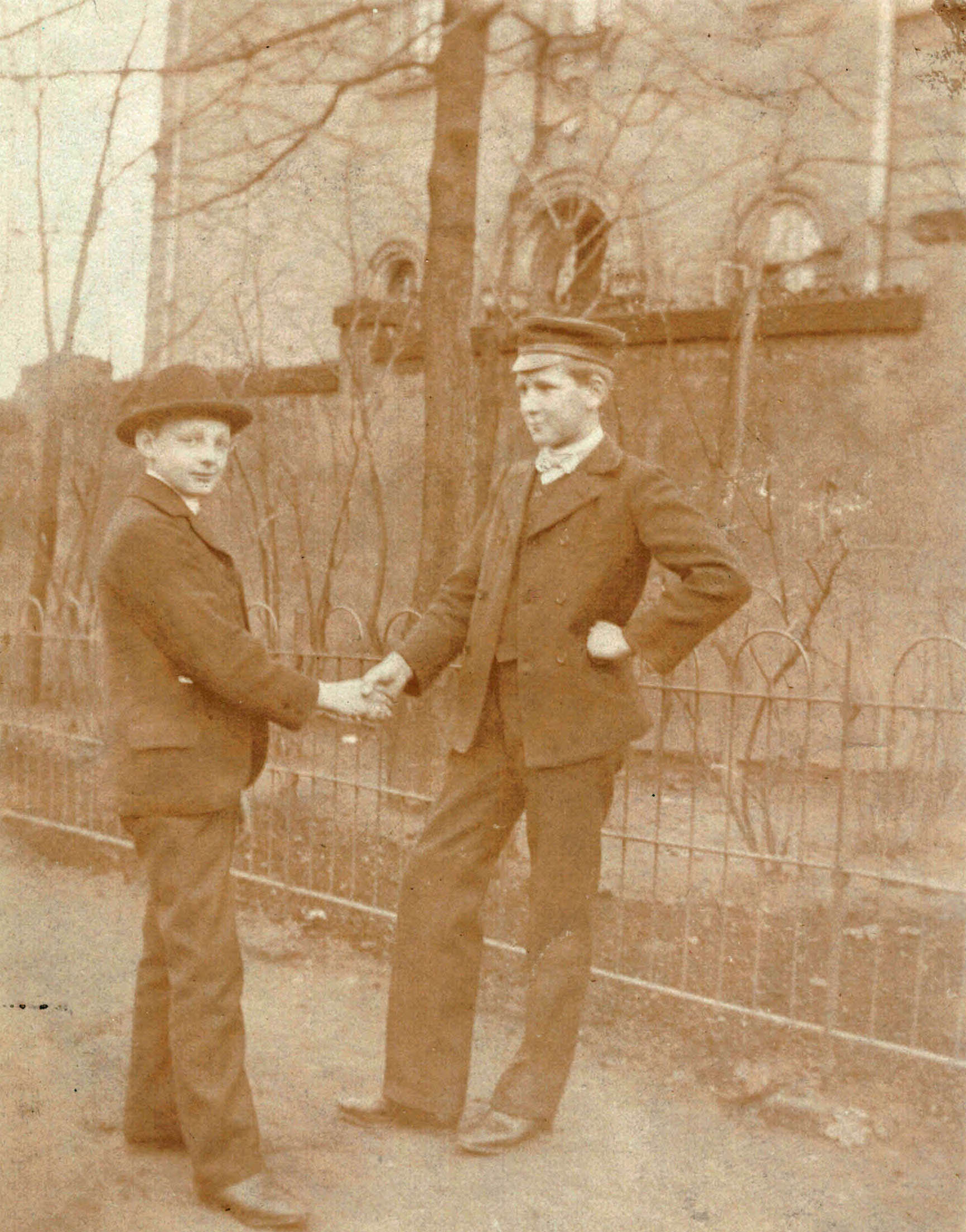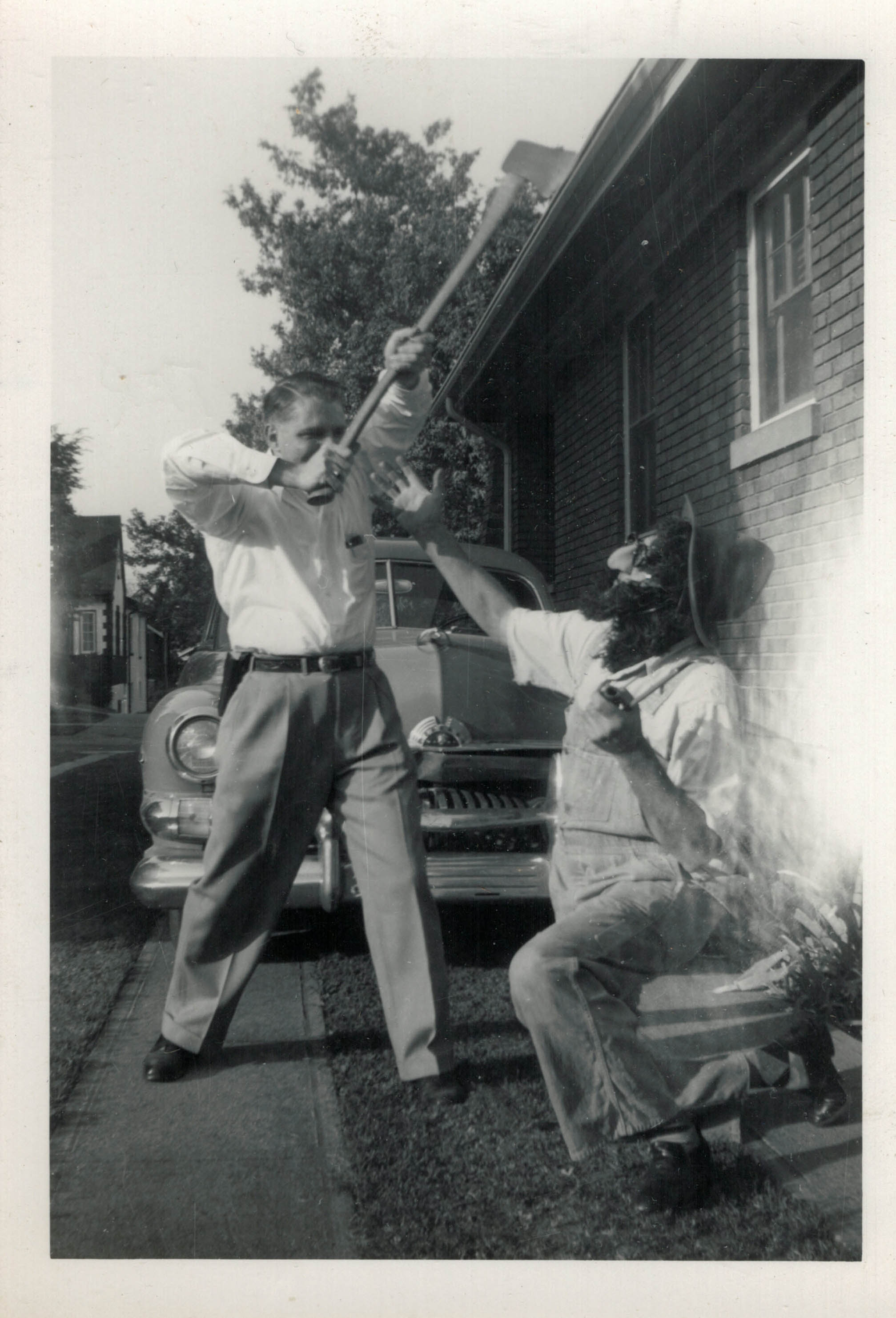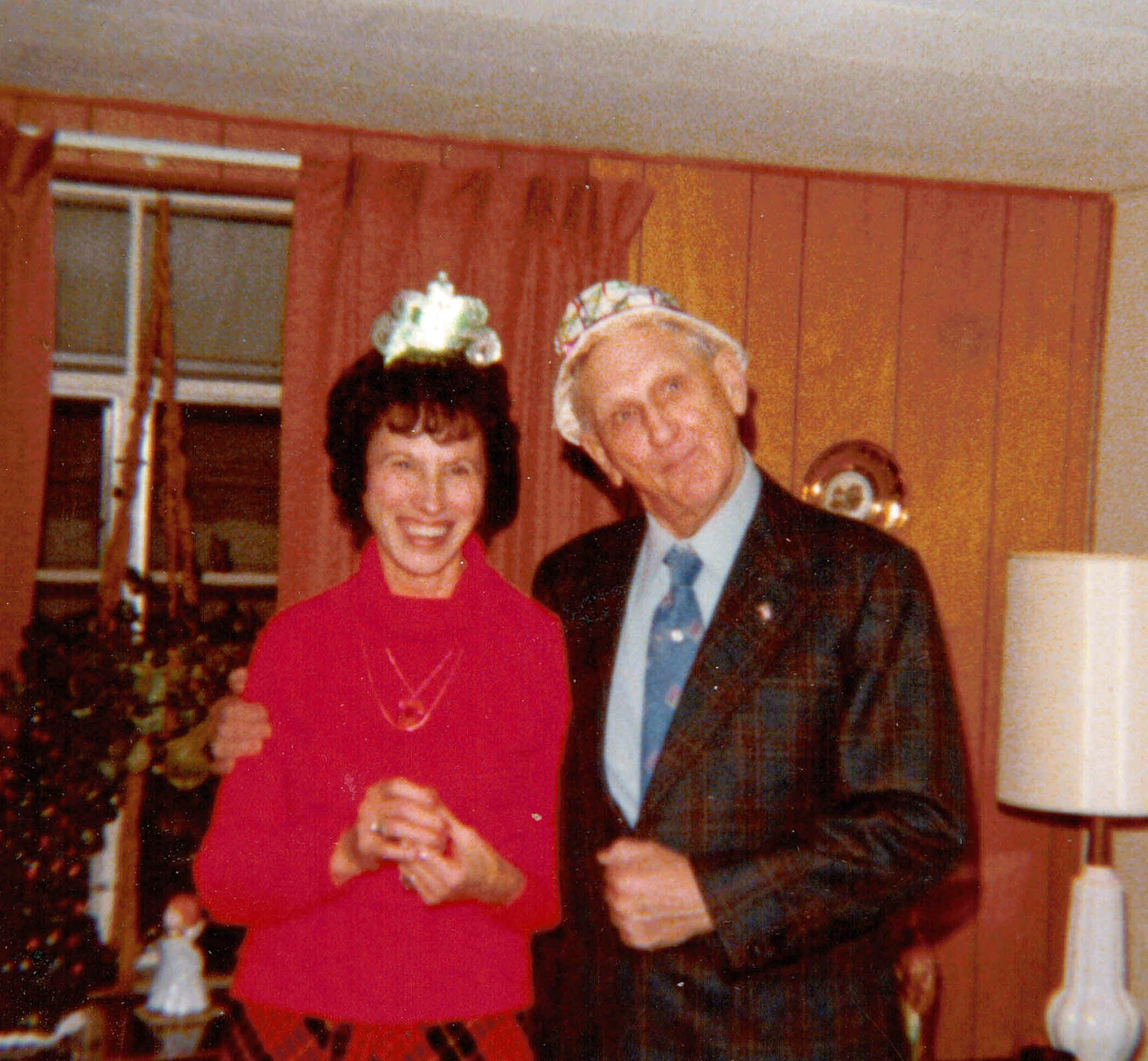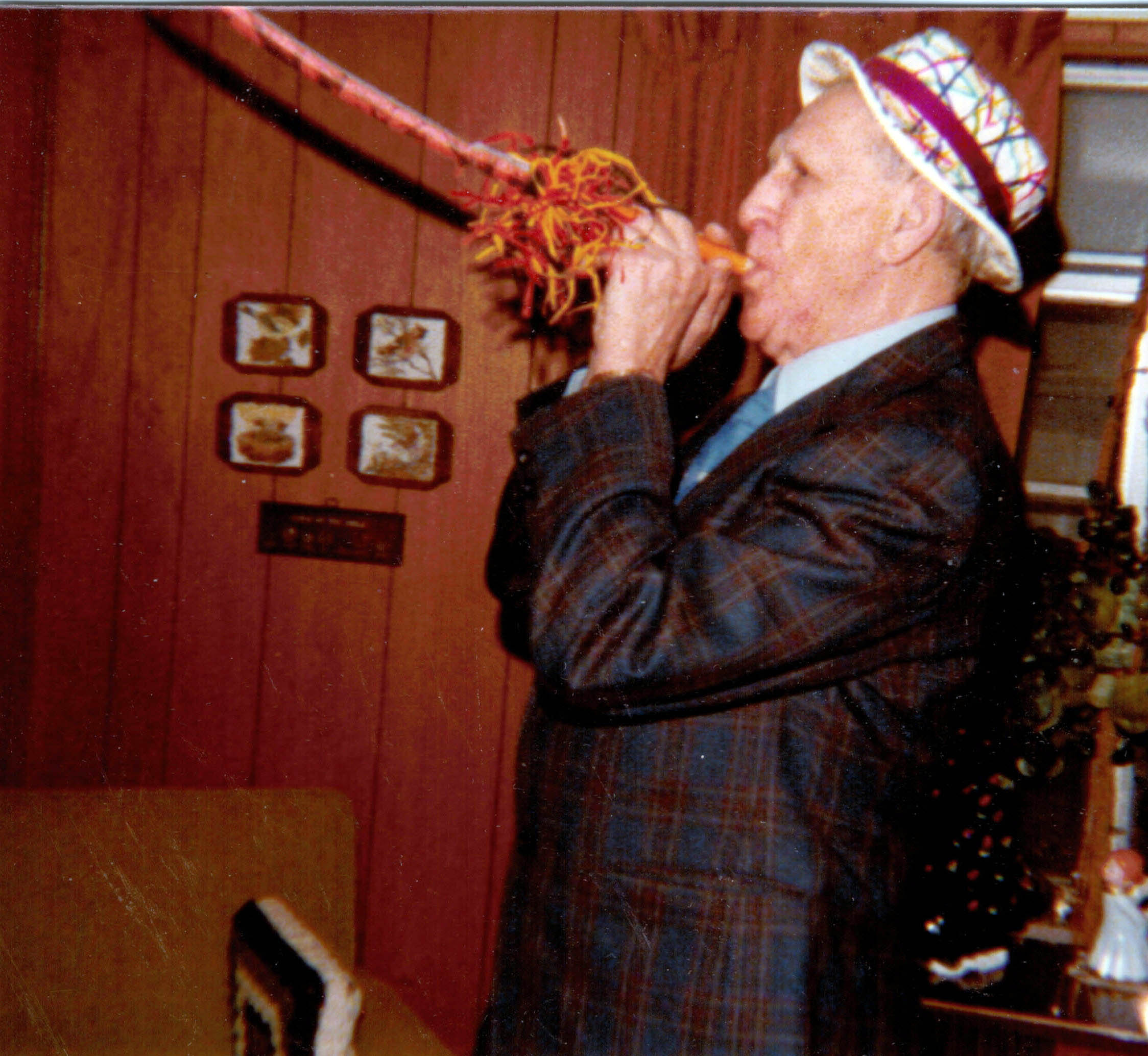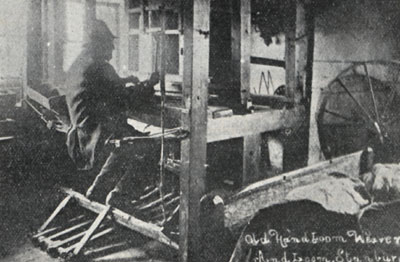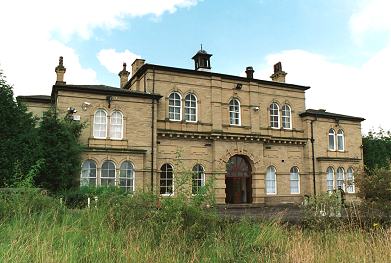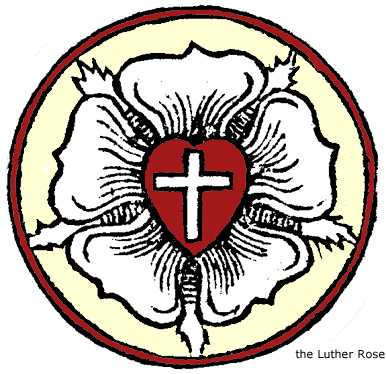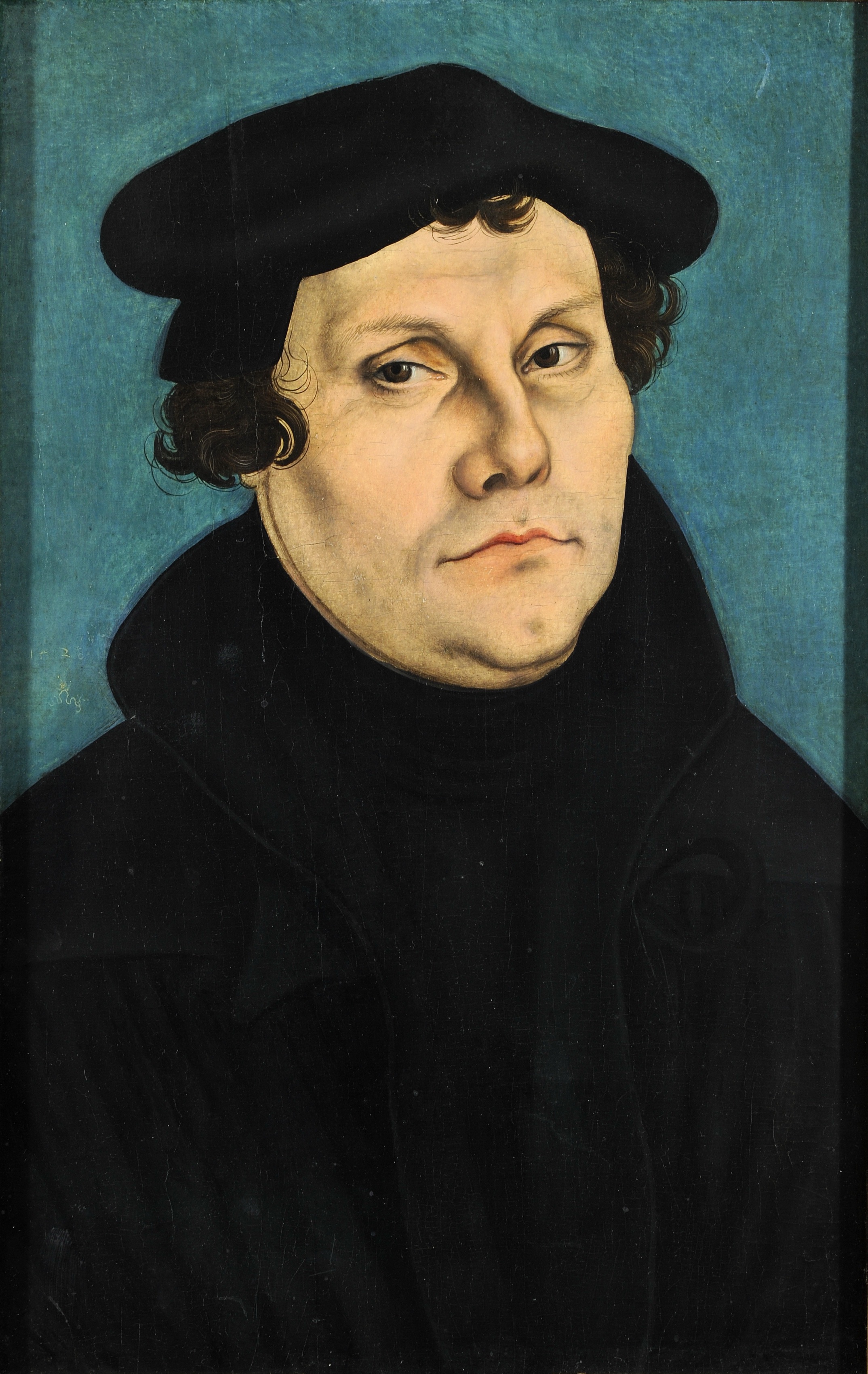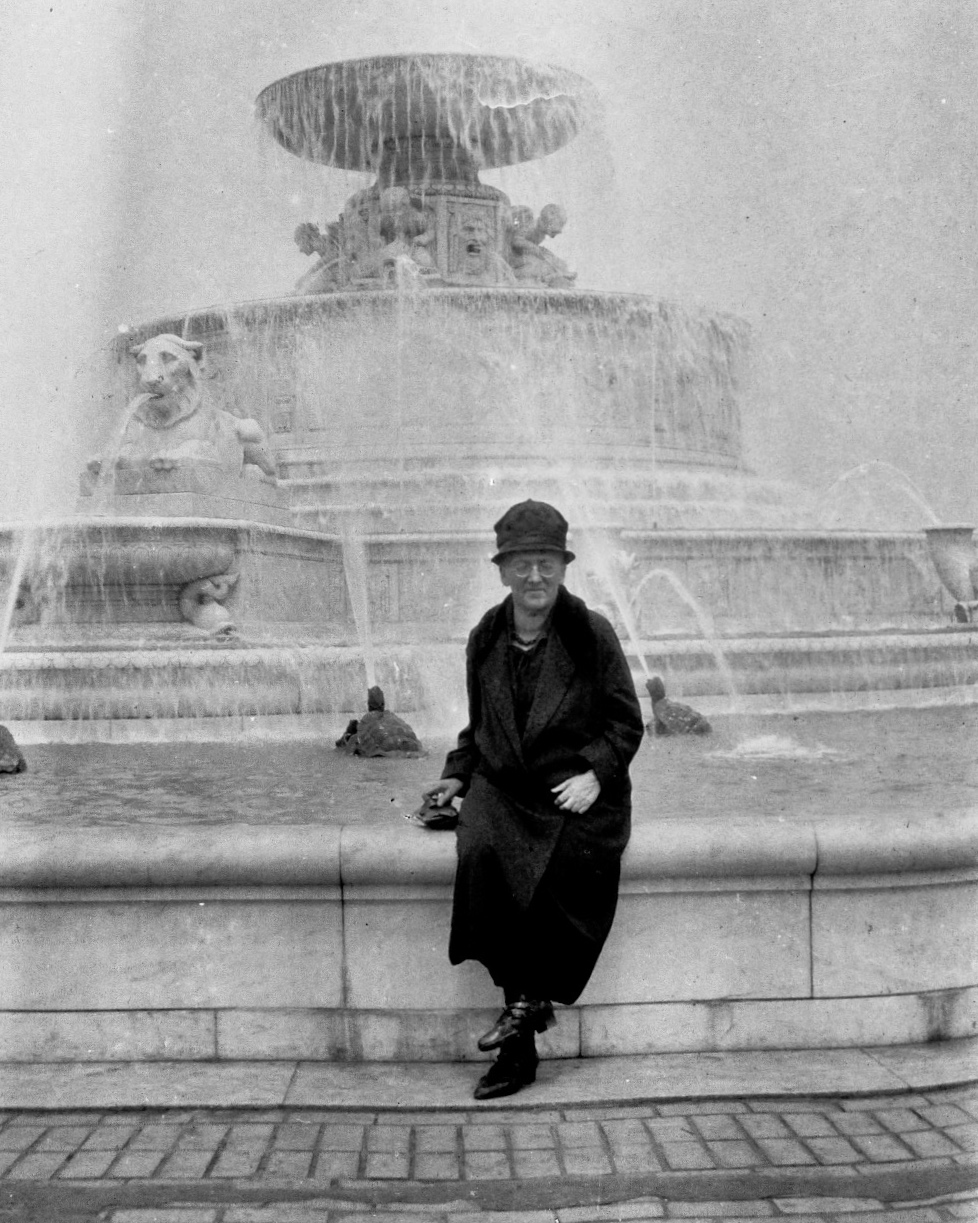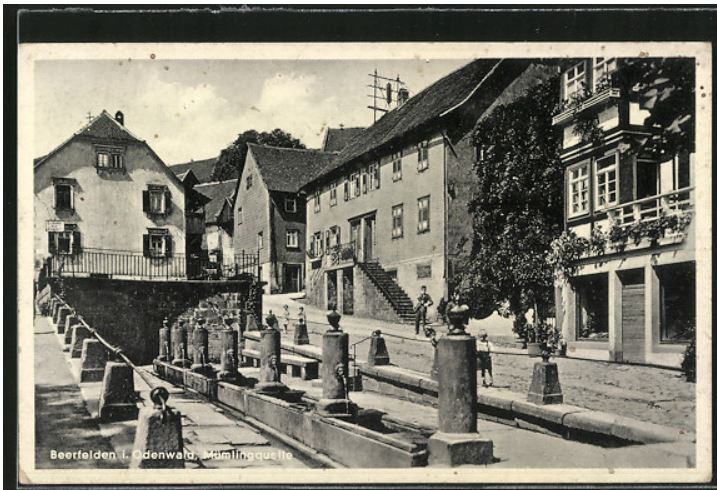Entry #11
I had planned to write about my mother, Claire Lindner Biermann, later this year, perhaps on the four-year anniversary of her death in July. There are so many things that I want to say about her to express my love and gratitude; but, a new theme came up suddenly last night and it is weighing on me heavily today.
Last night, I arrived home after work and was only greeted by Pearl, my little beagle-terrier mix. It is unusual that her companion, Jett, a black Lab, was not in their special room where they spend their days. I wondered what could be so fascinating out in the yard that he failed to come in for dinner. (For the record, the dogs have a pretty cushy setup. We lock them in the guest bedroom during the day, where they have a dog door to go in and out to a nice-size fenced yard.) I called. No Jett. With mounting apprehension, I went out into the yard where I immediately spotted Jett’s lifeless form. No, no, no, no. This could not be happening; but, it was true. Our 11-year-old black Lab was dead. I had to call my husband and break the news to him, because Jett was his dog – the fur love of his life. Gary received a call in the line of duty as a National Park ranger that a dog had been struck by a truck and had crawled onto the railroad track and was lying in the balast. Gary made the rescue and called to ask me if he could bring him home. Jett had a bloody and shattered hind leg, but we paid for the surgery that required a steel rod and wire to piece him together again. He was about a year old at the time and luckily, he healed beautifully. No one claimed this dog and he became part of our life for ten years. Jett was devoted to my husband and tried so hard to please us. He was good-natured, happy and funny. When I added my Pearl to our family, she and Jett bonded instantly.
 Jett the Rescued Lab
Jett the Rescued Lab
Last night, after crying my eyes out, I thought back to my mom. She definitely influenced my love for animals and taught me to be kind to them. Claire Lindner Biermann used to tell my sister and me stories about her dog Corky, the only dog she was ever allowed to have. One time Corky disappeared and was gone for weeks and Claire thought she’d never see him again; but he suddenly reappeared and he was overjoyed to see her. She was sure that someone had had Corky locked up somewhere. Mom also loved to relate tales about her cousins’ dog, Blacky, and his antics. (Well, really they were more the antics of my mom and her cousins, I think.) The only story I can still remember is how they gave Blacky what they thought was chocolate and it turned out to be laxative. Poor Blacky! My mom also liked to talk about Frankie the Pig. Frankie was the runt of the litter and Aunt Minta (who lived on a farm in Kentucky) made a pet of the piglet, allowing it in the house. Mom laughed because the pig started out as Frank. Everyone thought it was a boy, but it turned out to be a girl, so she became Frankie. My sister and I were captivated by the idea of a pig living in the house, like Arnold on the TV show, Green Acres.
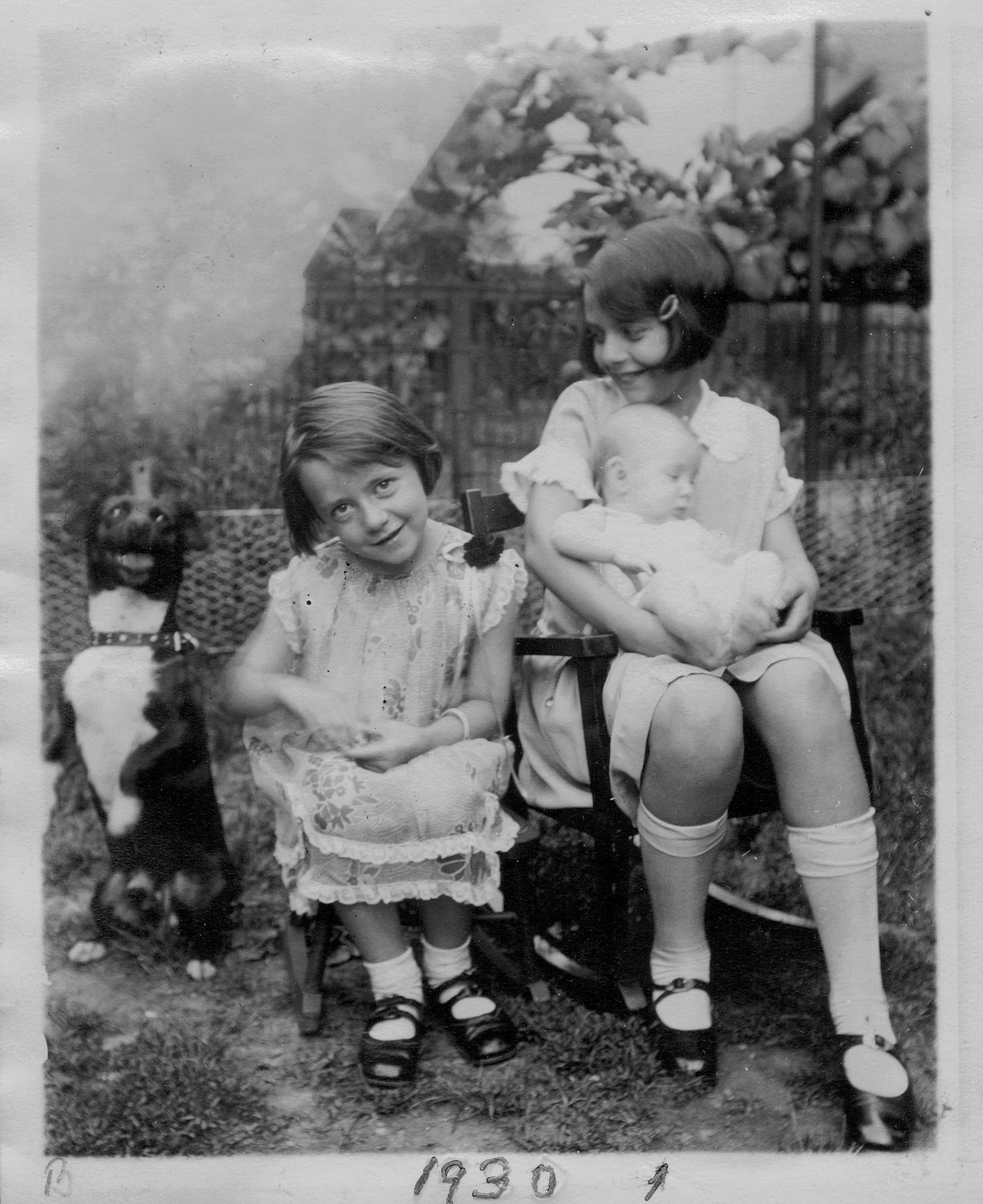

Blacky, Lois, Ruth and Vera Maier Claire Lindner with Corky


Claire with Corky in the Garden Claire and Pet (1934) maybe Corky?
You could tell that my mom loved Corky a lot. It made my sister and I really want a dog of our own. Every time we asked, Mom said that she would like to have a dog, too, but that she did not think our father would approve. This was hard to understand. Dad had had his own special dog, a German Shepherd named Queenie. His family also kept a retired race horse named Sadie Herm. Why couldn’t our family just have a dog? My sister and I began a campaign of pleading, cajoling and pestering, but we seemed to be getting nowhere. Mom said it was up to Dad, and Dad’s answer was always “no.”
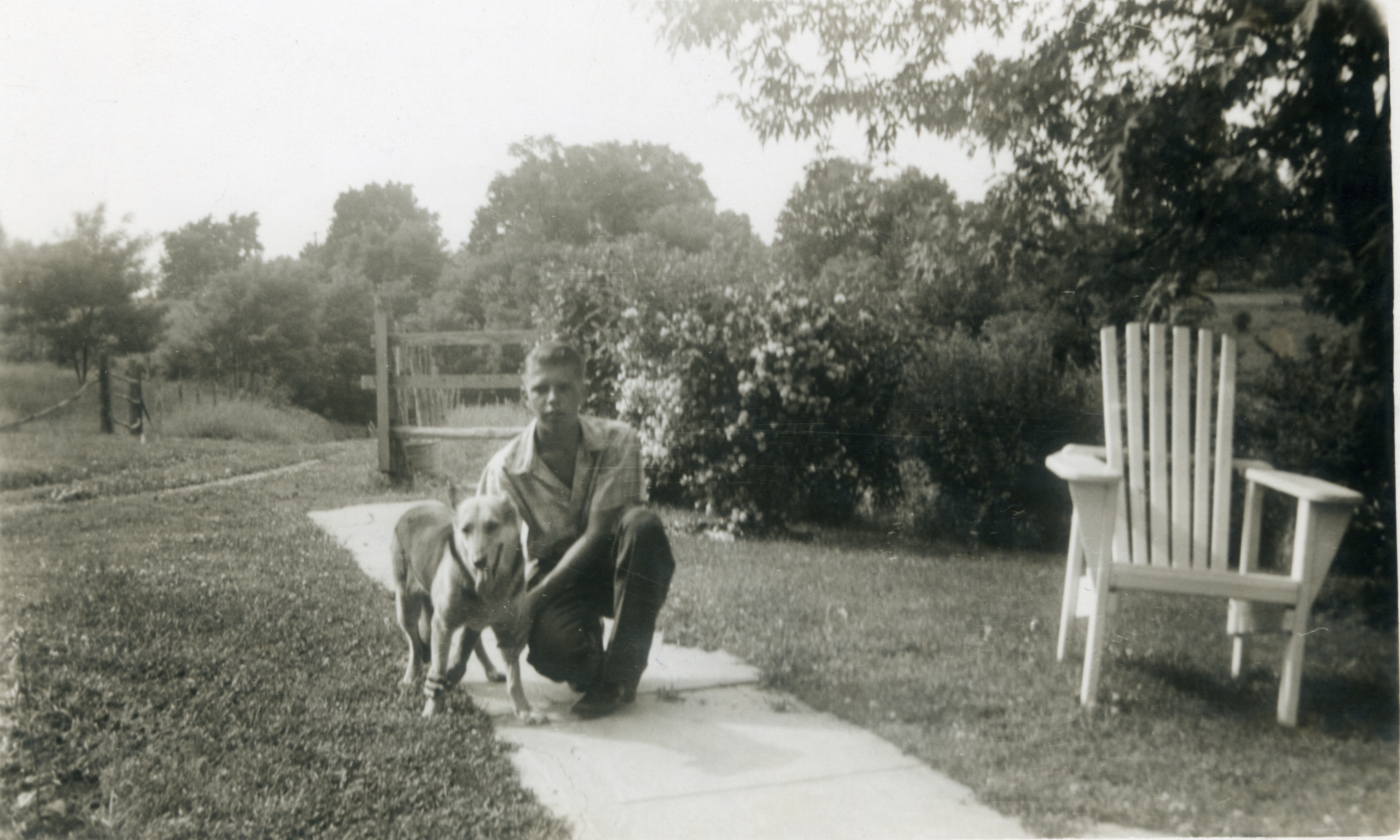 John H. Biermann and Queenie
John H. Biermann and Queenie
Then our mother did something that was completely uncharacteristic. She hatched a plot of deceit against our father. This is the only time in her life that I am aware of that my mother advocated dishonesty. This was the scheme: Mom said that I needed to tell Dad that a classmate was giving away a myna bird. Apparently, she had gotten him to agree that we could have a pet as long as it wasn’t a dog. She was convinced that the myna bird would be a deal breaker. Dad hated birds and certainly would not want one. He would think about the myna bird compared to a dog and decide we could go the canine route. Mom was convinced her plan would work.
That was not what happened. I made my pitch about the fictional classmate and the fictional myna bird and Dad said, okay. What? This was not supposed to happen!!! Mom! Mom! Now what? There was no myna bird. What was I going to do? I was trapped in a lie (and likely to be punished for it). Mom was very calm and collected. She said to tell our father that my classmate had decided to keep her bird. Mom felt encouraged, because I now had permission to have a myna bird. We would go to the pet store to buy one. She predicted that dad would look at the birds, then look at the puppies, and the choice would be clear. She guaranteed we would come home with a puppy.
We made a family excursion to the pet store, and guess what? Our mother knew her husband pretty well. Everyone was taken by a tiny beagle puppy, including John Biermann. We brought home the puppy and named her Dolly.

Mom with Dolly (at one year) – 1965
No one doted on that dog more than our father. Later, I brought home a stray mutt from Mexico that I called Felipa. She was to be my dog when I moved away to grad school, but my parents looked after her when I traveled. After one such visit, my dad informed me that I could not have Felipa back. “You are too busy,” he said. He was now retired. He asked, “Can you walk her five times a day?” Felipa lived with my parents until the ripe doggy age of 16.
In 48 years since my family fell in love with Dolly, I have always had a dog. In fact, I’ve had eight, usually in pairs because I hate them to be lonely. I think they all had good lives. Looking back through my family photos, I see many special dogs included.
 My great-grandmother, Julia Magdelena Stephan Solger Maier, grand-uncle, Will Maier, and companion, Pal Maier
My great-grandmother, Julia Magdelena Stephan Solger Maier, grand-uncle, Will Maier, and companion, Pal Maier
I like to think that Corky, Blacky and Queenie are not forgotten because my mother kept their stories alive. I know that my relatives were fond of their animals, because they often included them in family photos. Thank you, Mom, for teaching me to love animals and for your little white lie that led to a lifetime of furry memories; and thank you, dear companions, Dolly, Felipa, Mim, Diamond, Ruby, Ranger, Jett, and Pearl for all of your unconditional love. (And by the way, please don’t tell my dad about the myna bird! It can be our little secret.)
 Ranger, Jett, Pearl and Ruby about 2009
Ranger, Jett, Pearl and Ruby about 2009
